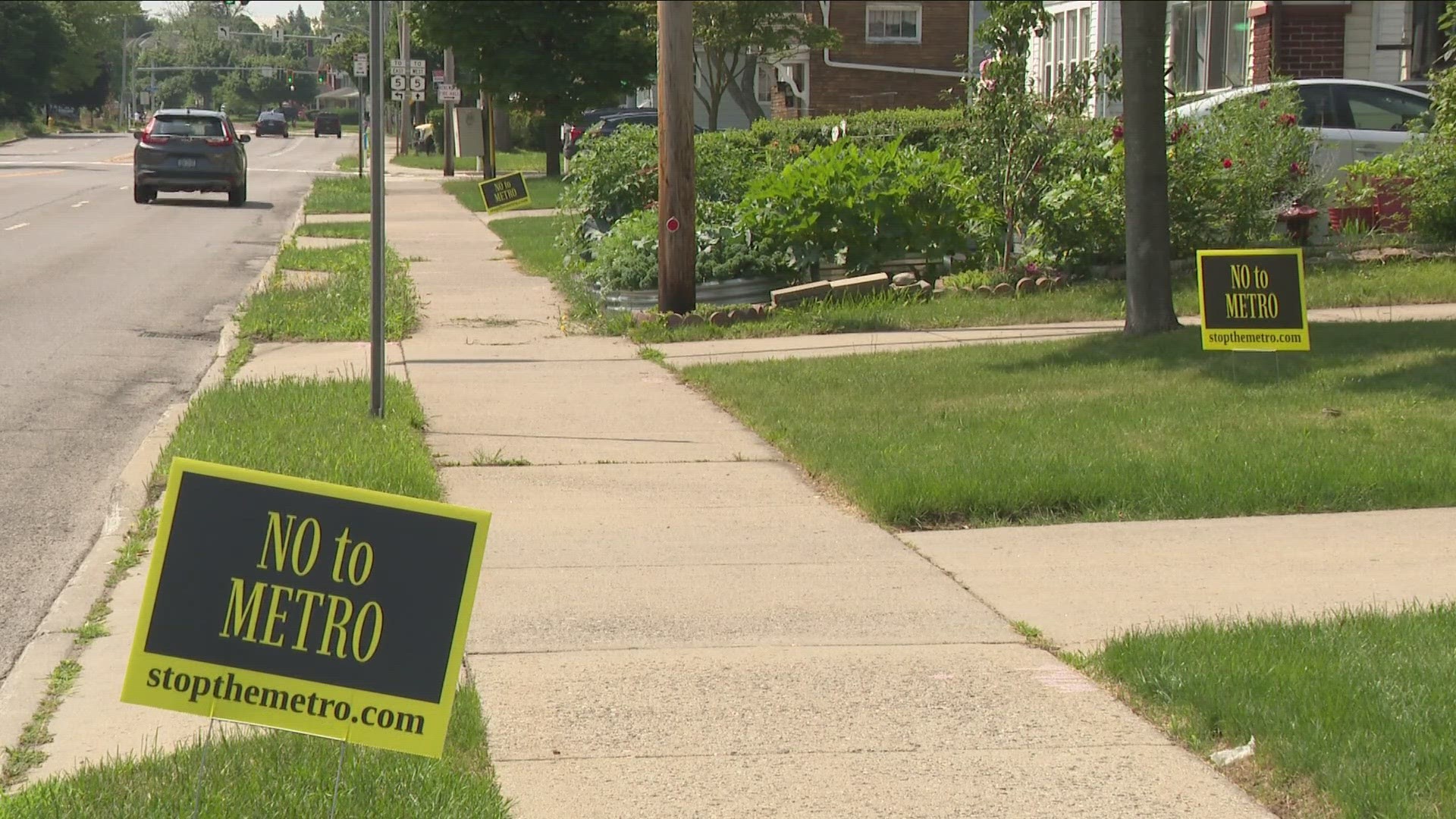BUFFALO, N.Y. — A group in Western New York, dubbed "Stop the Metro," is taking action in opposition to plans by the Niagara Frontier Transportation Authority to expand the metro rail to the University at Buffalo North Campus.
Yellow and black signs making their message clear, "No to the Metro," can be seen outside of homes and businesses along Niagara Falls Boulevard in Amherst and Tonawanda.
Expansion in the works
This opposition comes amid consideration of expansion, which has been discussed for nearly 50 years, but is now starting to gain momentum with the NFTA working with the Federal Transit Authority (FTA) and conducting an Environmental Impact Statement (EIS).
"We are not opposed to the NFTA and its efforts to increase ridership," Stop the Metro organizer Michael Nigrin said. "But we are not supporting the NFTA at the cost of destruction of the entire community and what they are talking about is really an abomination."
The current light rail transit system sits at 6.4 miles, but was originally proposed as a 43-mile concept in the 1960s and '70s. A model for a 14-mile rail line between downtown Buffalo and Amherst was planned, before eventually being scaled back to the current length and opening in 1985.
The plan would extend the metro rail first, by tunneling from the existing University Station at UB's South Campus, and then continuing as an above ground light rail system down Niagara Falls Boulevard.
The line would then extend down Maple Road, Sweet Home Road, and through the University at Buffalo's North Campus to John James Audubon Parkway and Interstate 990.
Ten stations would be proposed in the potential seven mile expansion that a 2015 NFTA report estimates would cost upwards of $1 billion.
Stop the Metro's opposition, concerns
Stop the Metro has had two meetings so far this year, one on May 24 and another on June 14. One resident who spoke with 2 On Your Side had major concerns about the project.
RuthAnn Henry, a resident on Niagara Falls Boulevard, has a medical condition that makes her unable to walk without assistance, making her need for emergency services far greater than the average person.
The tunnel entrance on the proposed metro rail line would be located in front of her home and would reduce the amount of traffic lanes on the boulevard, which she fears would slow emergency response time.
"They're going to be taking longer because they'll drop it from a four-lane down to a two-lane," Henry said. "And then … getting around vehicles with a metro in the middle of the road?"
Another concern noted by Henry is noise.
"They got to blow their horn coming out of the tunnel, they got to blow their horn going into the tunnel," Henry said.
In addition, the group is concerned about the potential impact on property values, and potential damage to their homes by blasting from tunnel work.
Stop the Metro's flyer lists additional concerns.
Project updates, NFTA rail preparations
In a project update by the NFTA in 2021, a bus and rail system were both being considered. The Environmental Impact Statement is intended to assess the potential environmental effects of the project and it must be completed to advance to design phases, according to a 2023 transit development plan published by the NFTA.
In the Draft Environmental Impact Statement (DEIS), drafted in 2020, multiple areas are covered including socioeconomic impacts, environmental justice, environmental impacts, and noise among other things.
The Final Environmental Impact Statement (FEIS) is scheduled to be released in winter of this year. If all federal and state laws are met, federal funding can be tapped into through the FTA's Capital Investment Grants (CIG) programs.
What Stop the Metro is doing
Stop the Metro had over 60 people at their last meeting in June. With over 200 signatures, they are hoping to get the ball rolling swiftly.
"I would say 80 percent of the people I hand flyers to have no idea this is on the table," Nigrin said. "They are absolutely in shock."

